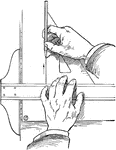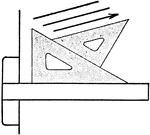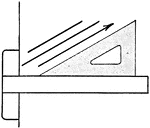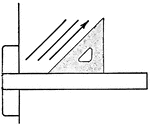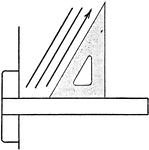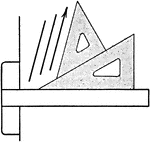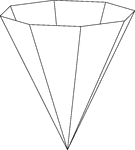
Inverted Octagonal Pyramid
Illustration of a hollow right octagonal pyramid. The base is an octagon and the faces are isosceles…
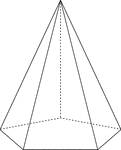
Pentagonal Pyramid
Illustration of a right pentagonal pyramid with hidden edges shown. The base is an pentagon and the…
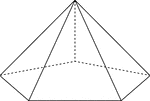
Pentagonal Pyramid
Illustration of a right pentagonal pyramid with hidden edges shown. The base is an pentagon and the…
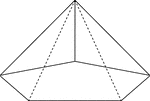
Pentagonal Pyramid
Illustration of a right pentagonal pyramid viewed from below with hidden edges shown. The base is an…
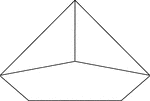
Pentagonal Pyramid
Illustration of a right pentagonal pyramid viewed from below. The base is an pentagon and the faces…
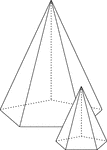
Similar Pentagonal Pyramids
Illustration of 2 similar right pentagonal pyramids with hidden edges shown. The height of the pyramid…

2 Right Pentagonal Pyramids
Illustration of 2 right pentagonal pyramids with hidden edges shown. The pentagonal bases are congruent,…
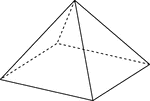
Rectangular Pyramid
Illustration of a right rectangular pyramid with hidden edges shown. The base is a rectangle and the…

Rectangular Pyramid
Illustration of a right rectangular pyramid with hidden edges shown. The base is a rectangle and the…
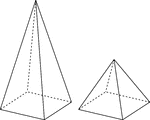
2 Right Rectangular Pyramids
Illustration of 2 right rectangular pyramids with hidden edges shown. The rectangular bases are congruent,…

Skewed Rectangular Pyramid
Illustration of a non-right, or skewed, rectangular pyramid with hidden edges shown. The base is a rectangle…

Rectangular Pyramid
Illustration of a right rectangular pyramid with hidden edges shown. The base is a rectangle and the…
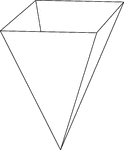
Inverted Rectangular Pyramid
Illustration of a hollow right rectangular pyramid. The base is a rectangle and the faces are isosceles…
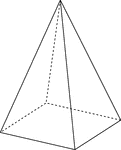
Rectangular Pyramid
Illustration of a right rectangular pyramid with hidden edges shown. The base is a rectangle and the…

Triangle Inscribed In A 12-Point Star
Illustration of an equilateral triangle inscribed in a closed concave geometric figure with 24 sides…
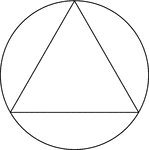
Triangle Inscribed In A Circle
Illustration of an equilateral triangle inscribed in a circle. This can also be described as a circle…
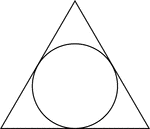
Triangle Circumscribed About A Circle
Illustration of an equilateral triangle circumscribed about a circle. This can also be described as…
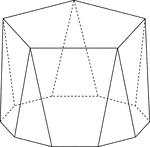
Polyhedron With Pentagon Bases
Illustration of a pentagonal polyhedron that is formed by having two parallel congruent pentagonal bases…

Polyhedron With Pentagon Bases
Illustration of a pentagonal polyhedron that is formed by having two parallel congruent pentagonal bases…
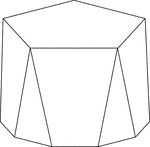
Polyhedron With Pentagon Bases
Illustration of a pentagonal polyhedron that is formed by having two parallel congruent pentagonal bases…
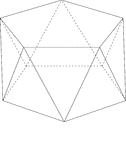
Pentagonal Antiprism
Illustration of a pentagonal antiprism. An antiprism is formed by having two parallel congruent bases…

Pentagonal Antiprism
Illustration of a pentagonal antiprism. An antiprism is formed by having two parallel congruent bases…
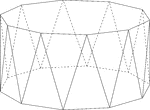
Decagonal Antiprism
Illustration of a decagonal antiprism. An antiprism is formed by having two parallel congruent bases…
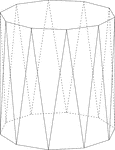
Decagonal Antiprism
Illustration of a decagonal antiprism. An antiprism is formed by having two parallel congruent bases…

Dodecagonal Antiprism
Illustration of a dodecagonal antiprism. An antiprism is formed by having two parallel congruent bases…
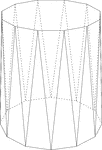
Dodecagonal Antiprism
Illustration of a dodecagonal antiprism. An antiprism is formed by having two parallel congruent bases…

Heptagonal/Septagonal Antiprism
Illustration of a heptagonal, or sometimes known as a septagonal antiprism. An antiprism is formed by…
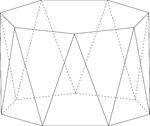
Heptagonal/Septagonal Antiprism
Illustration of a heptagonal, or sometimes known as a septagonal antiprism. An antiprism is formed by…
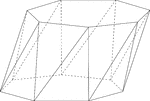
Skewed Heptagonal/Septagonal Antiprism
Illustration of a skewed (non-right) heptagonal, or sometimes known as a septagonal antiprism. An antiprism…
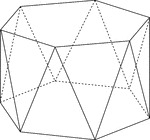
Hexagonal Antiprism
Illustration of a hexagonal antiprism. An antiprism is formed by having two parallel congruent bases…
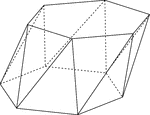
Skewed Hexagonal Antiprism
Illustration of a skewed (non-right) hexagonal antiprism. An antiprism is formed by having two parallel…

Hexagonal Antiprism
Illustration of a hexagonal antiprism. An antiprism is formed by having two parallel congruent bases…
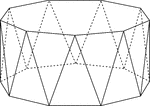
Nonagonal Antiprism
Illustration of a nonagonal antiprism. An antiprism is formed by having two parallel congruent bases…

Skewed Nonagonal Antiprism
Illustration of a skewed (non-right) nonagonal antiprism. An antiprism is formed by having two parallel…

Nonagonal Antiprism
Illustration of a nonagonal antiprism. An antiprism is formed by having two parallel congruent bases…

Octagonal Antiprism
Illustration of an octagonal antiprism. An antiprism is formed by having two parallel congruent bases…
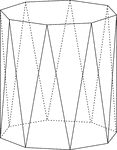
Octagonal Antiprism
Illustration of an octagonal antiprism. An antiprism is formed by having two parallel congruent bases…
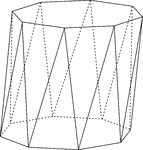
Skewed Octagonal Antiprism
Illustration of a skewed (non-right) octagonal antiprism. An antiprism is formed by having two parallel…
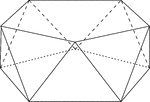
Pentagonal Antiprism
Illustration of a pentagonal antiprism. An antiprism is formed by having two parallel congruent bases…
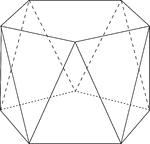
Pentagonal Antiprism
Illustration of a pentagonal antiprism. An antiprism is formed by having two parallel congruent bases…
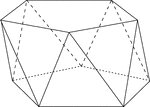
Skewed Pentagonal Antiprism
Illustration of a skewed (non-right) pentagonal antiprism. An antiprism is formed by having two parallel…
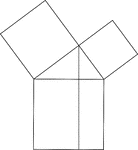
Euclid's Pythagorean Theorem Proof
Illustration used to prove the Pythagorean Theorem, according to Euclid. A perpendicular is drawn from…
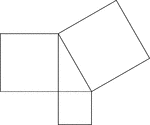
Geometric Pythagorean Theorem Proof
Illustration that can be used to prove the Pythagorean Theorem, the sum of the squares of the legs is…
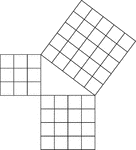
Geometric Pythagorean Theorem Proof
Illustration that can be used to prove the Pythagorean Theorem, the sum of the squares of the legs is…

Pythagorean Theorem Proof by Rearrangement
A visual illustration used to prove the Pythagorean Theorem by rearrangement. When the 4 identical triangles…
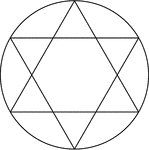
Star Inscribed In A Circle
Illustration of a 6-point star created by two equilateral triangles (often described as the Star of…
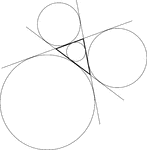
Triangle With Circle Constructions
Illustration of a triangle with its incircle and three excircles constructed.
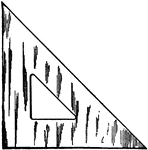
45 Degree Triangle
Triangles are made of various substances such as wood, rubber, celluloid, and steel.

30-60 Degree Triangle
Triangles are made of various substances such as wood, rubber, celluloid, and steel.
Triangle Scales
The triangle scale has six surfaces for different graduations, and the scales are arranged so that the…
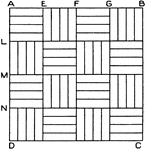
Square Exercise
Square pattern exercise: Divide A D and A B into 4 equal parts and draw horizontal and vertical lines.…
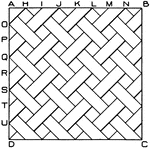
Weave Exercise
Weave pattern exercise: Divide A D and A B into 8 equal parts, and through the points O, P, Q, H, I,…

Drawing Parallel Lines Exercise
Parallel lines are drawn by using a triangle in combination with a T-square. To draw a line parallel…

